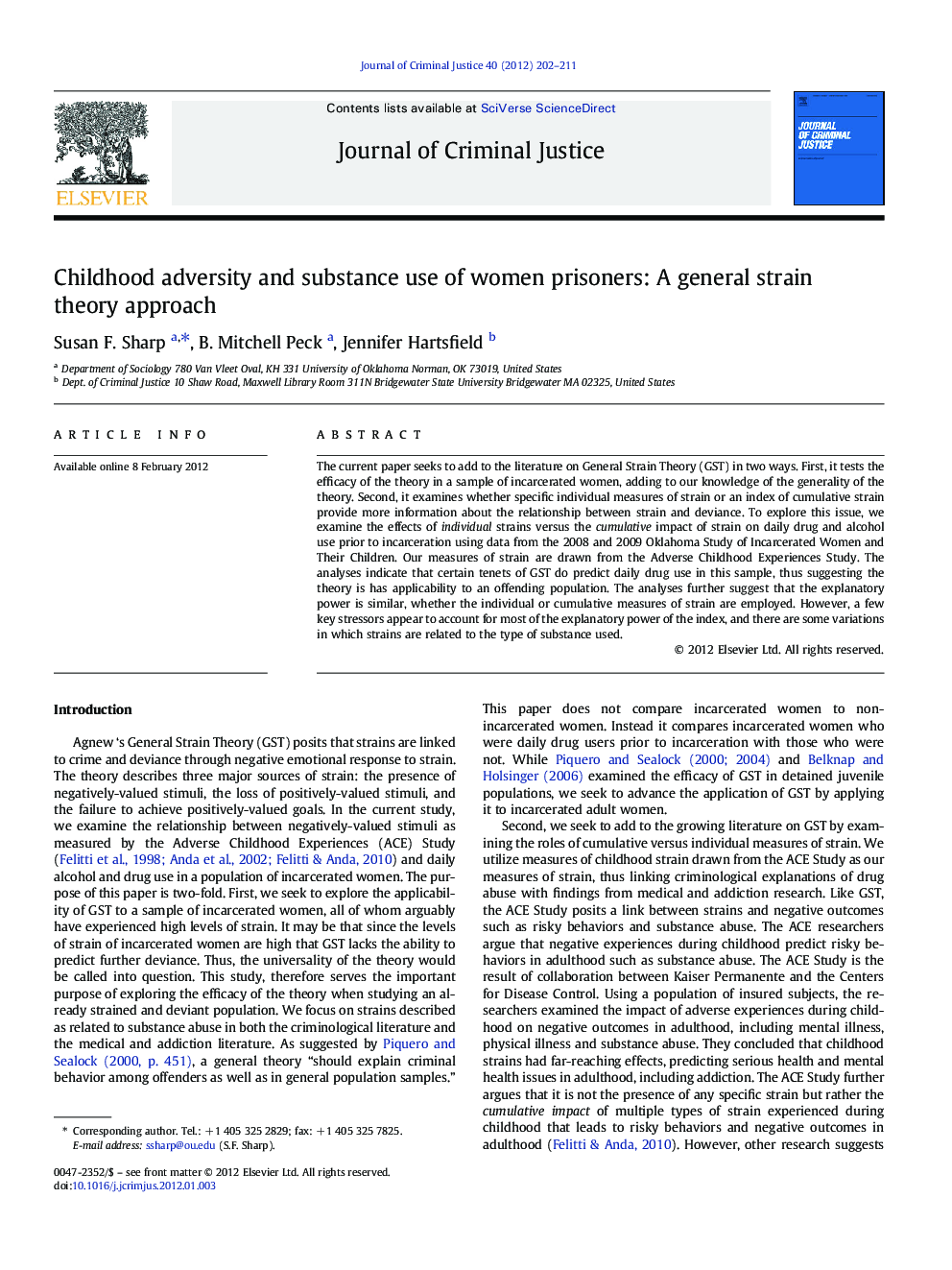| Article ID | Journal | Published Year | Pages | File Type |
|---|---|---|---|---|
| 882868 | Journal of Criminal Justice | 2012 | 10 Pages |
The current paper seeks to add to the literature on General Strain Theory (GST) in two ways. First, it tests the efficacy of the theory in a sample of incarcerated women, adding to our knowledge of the generality of the theory. Second, it examines whether specific individual measures of strain or an index of cumulative strain provide more information about the relationship between strain and deviance. To explore this issue, we examine the effects of individual strains versus the cumulative impact of strain on daily drug and alcohol use prior to incarceration using data from the 2008 and 2009 Oklahoma Study of Incarcerated Women and Their Children. Our measures of strain are drawn from the Adverse Childhood Experiences Study. The analyses indicate that certain tenets of GST do predict daily drug use in this sample, thus suggesting the theory is has applicability to an offending population. The analyses further suggest that the explanatory power is similar, whether the individual or cumulative measures of strain are employed. However, a few key stressors appear to account for most of the explanatory power of the index, and there are some variations in which strains are related to the type of substance used.
► We utilize General Strain Theory to predict pre-incarceration daily drug use of women prisoners. ► We expand the use of General Strain Theory to an incarcerated population. ► We examine the separate and cumulative effects of adverse childhood experiences on substance use. ► Both separate and cumulative strain measures predict daily drug use. ► Separate strain measures work slightly better than cumulative in predicting daily drug use
